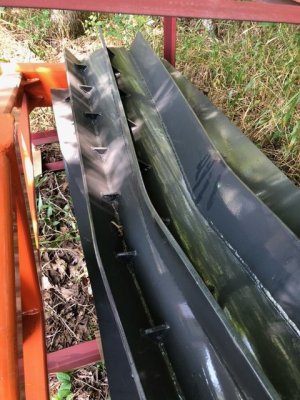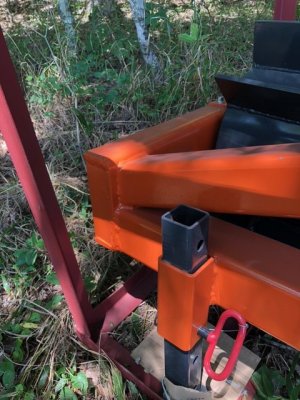Brokenbear
5 year old buck +
Since water freezes ..and I have to haul water to my farm to spray for example ..I am looking at a new crimp roller with 75 gallon capacity ..
It seems all or most users of rollers add weight with the most using water ..but in my case draining before winter sets another water haul cycle so some form of anti-freeze is logical ..
But then sand comes into the picture for two reasons ..it does not freeze and it is heavier than water
water/ 75 X 8.3 = 622 lbs + 1400 lb (empty roller) = 2022 lb w/water divided by 8' = 252 lbs per foot or 21 lbs per inch down pressure
sand/ 75 X 13.4= 1005 lbs + 1400 lb (empty roller) = 2405 lb w/sand divided by 8' = 301 lbs per foot or 25 lbs per inch down pressure
The roller is 24" in diameter and 8' wide
I have read but cannot remember where ..the recommended minimum down pressure for a roller crimper ..
What weight or weight additions have you had success with your roll crimper ??? ..
It seems all or most users of rollers add weight with the most using water ..but in my case draining before winter sets another water haul cycle so some form of anti-freeze is logical ..
But then sand comes into the picture for two reasons ..it does not freeze and it is heavier than water
water/ 75 X 8.3 = 622 lbs + 1400 lb (empty roller) = 2022 lb w/water divided by 8' = 252 lbs per foot or 21 lbs per inch down pressure
sand/ 75 X 13.4= 1005 lbs + 1400 lb (empty roller) = 2405 lb w/sand divided by 8' = 301 lbs per foot or 25 lbs per inch down pressure
The roller is 24" in diameter and 8' wide
I have read but cannot remember where ..the recommended minimum down pressure for a roller crimper ..
What weight or weight additions have you had success with your roll crimper ??? ..






